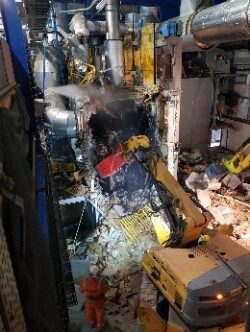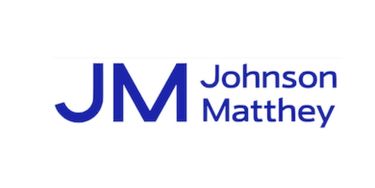Client: Johnson Matthey
Location: Royston, UK
Sector/Industry: Metals Refining
Completion: 2021 -2025
Project Background
In 2021, RVA was engaged as CDM Principal Designer, Specialist Project Manager and Engineer to the Contract by Johnson Matthey to assist the company’s Clean Air Operations / Catalytic Converter Manufacturing division through a complex dismantling exercise to remove equipment and structures, in preparation for the installation of replacement equipment.
Challenges
Due to the complexity of the project, a range of challenges were encountered, for example:
- The proximity of live systems.
- Ongoing adjacent construction projects.
- Development of a robust and auditable regime to validate isolation and decontamination of items removed for reuse.
- The requirement for the installation of replacement flooring to safely close voids created during and after the dismantling process.
- Large industrial ovens required sections to be dismantled by hand.
- The control of fumes and emissions was also critical to mitigate any impact to ongoing process operations.
- Mitigation of the continual risk of triggering the NOx monitors within the building., It was mandated, therefore, unless unavoidable, all contractors’ plant-reliant methods of demolition, e.g. the use of LPG or diesel-powered machines, should be avoided within the buildings, with specialist demolition equipment being the selected alternative. Where this option was not possible, local exhaust ventilation (LEV) systems were installed to prevent any triggering of the air monitoring systems.
- Temporary works were required due to the need to remove a section of the roof to allow for lifting out some of the ovens.
Key elements in managing the project
- RVA responded to the client’s requirements based on its experience of delivering over 1,000 projects, undertook a Hazid, developed the Pre-construction Information, and supported the procurement and engineering teams to develop a road map to source a specialist dismantling contractor.
- Guide and support the client in the preparation of the plant and equipment (isolation and decontamination) to allow for safe removal.
- Methodologies designed to reduce the need for minimal human intervention.
- Close cooperation between the client, the contractor and the RVA at all levels.
- Provisions made for every foreseeable risk, e.g. loss of containment of hydrocarbon product, explosive atmospheres.
- Detailed collaborative scrutiny and input to the dynamic development of all RAMS.
- Management personnel for all organisations are present on site throughout working hours.
- RVA reviewed all risk assessments, lift studies, method statements and monitored on-site compliance during the works.
- On completion of the above project, RVA was awarded further project work on the site.
Outcome
The project was successfully delivered ahead of programme in a safe condition to allow for the construction of the replacement plant to commence. But more importantly, it was delivered to a demanding timescale with no accidents, incidents, loss of containment or impact to surrounding operational equipment and the Johnson Matthey business.
Machine demolition, dismantling and removal of two of the ovens










